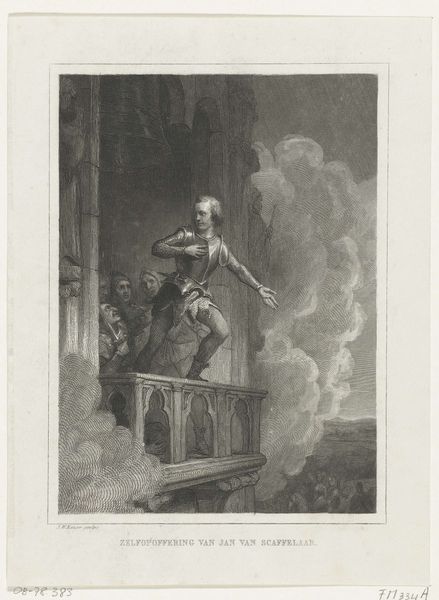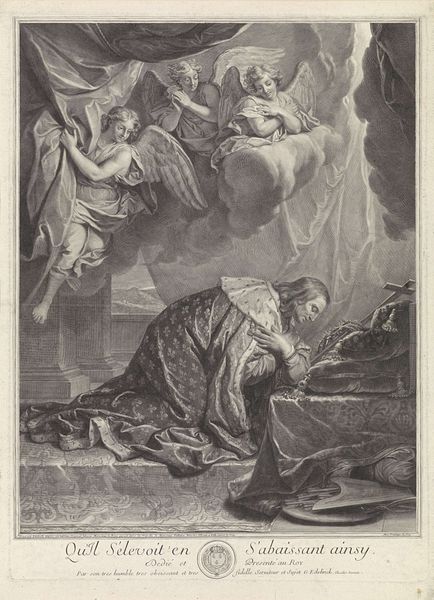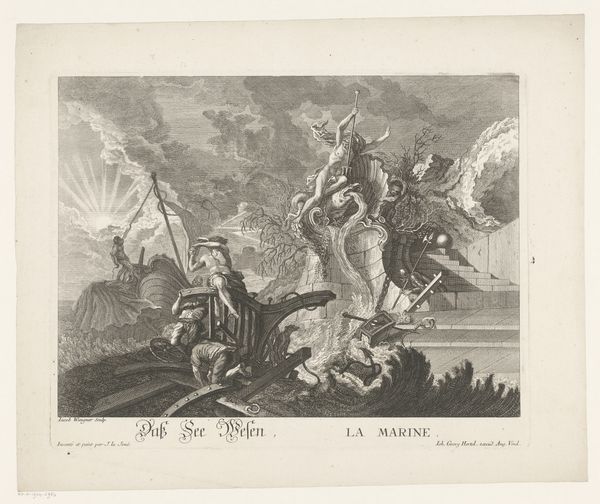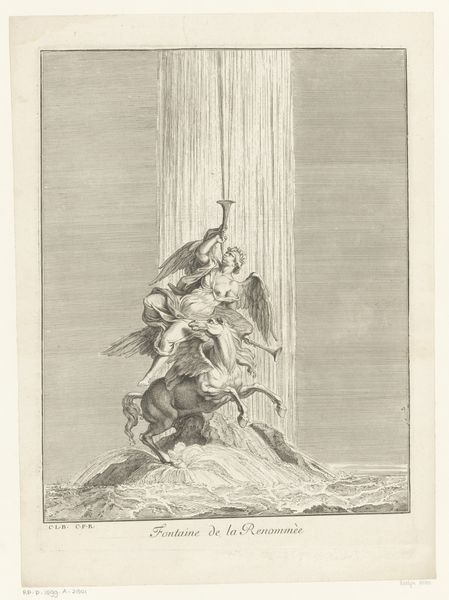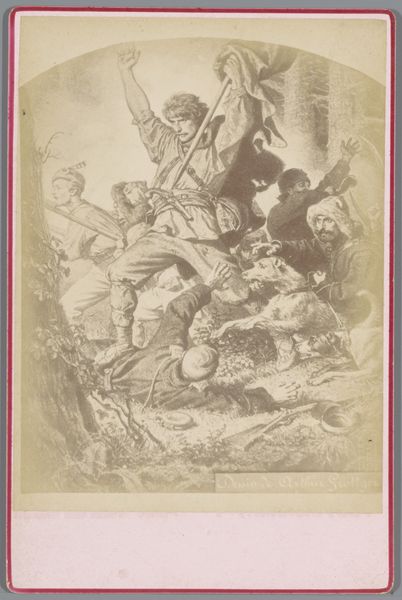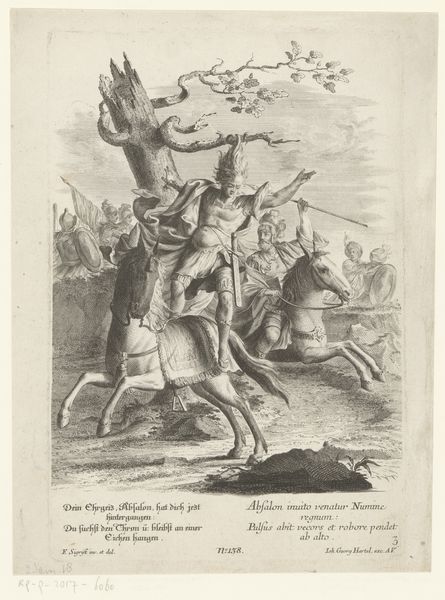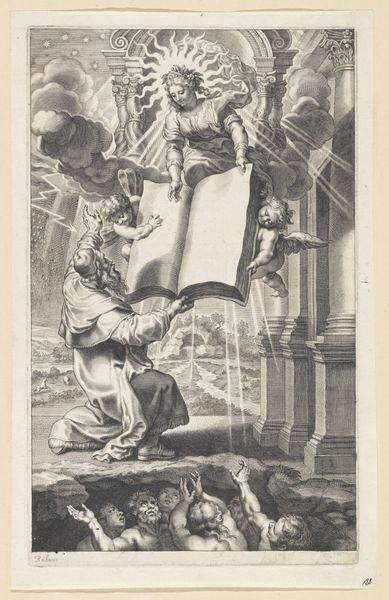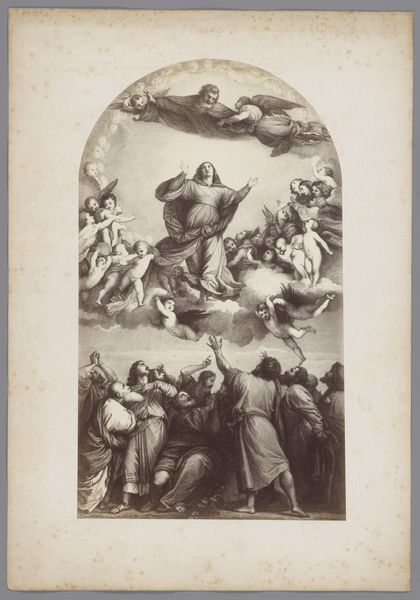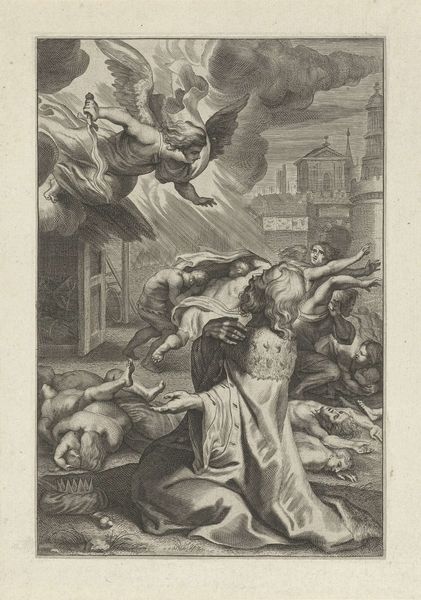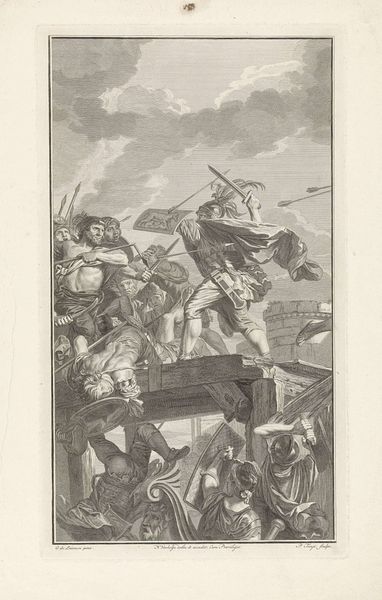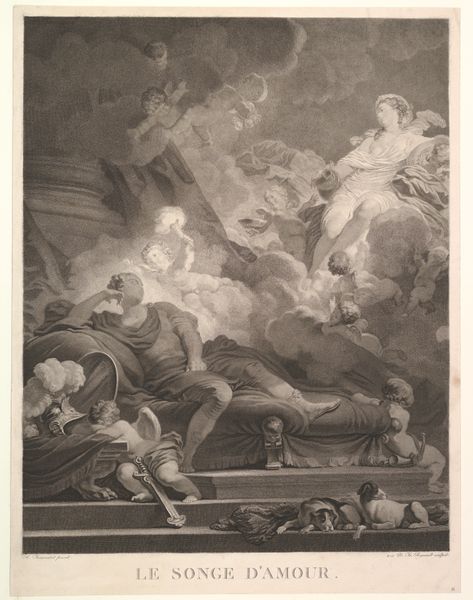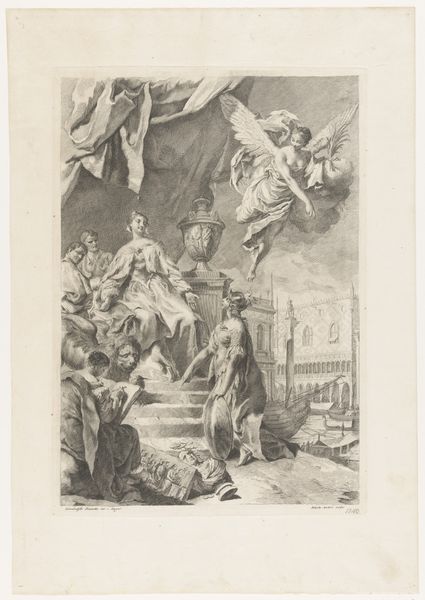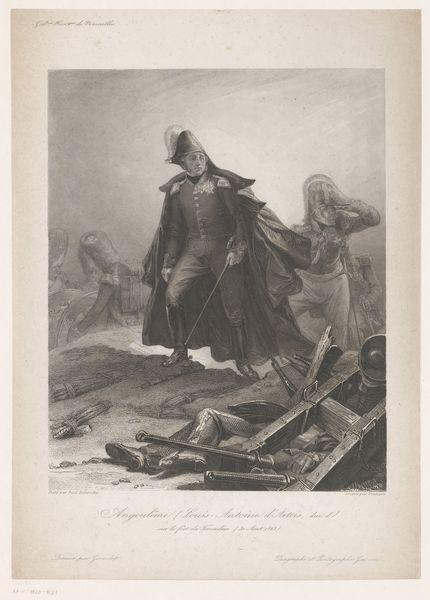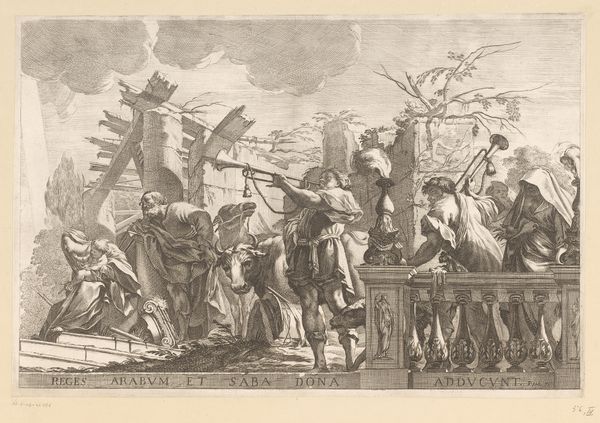
print, engraving
#
narrative-art
# print
#
charcoal drawing
#
figuration
#
19th century
#
history-painting
#
graphite
#
engraving
Dimensions: height 474 mm, width 353 mm
Copyright: Rijks Museum: Open Domain
Curator: Here we have Franciscus Bernardus Waanders' "Jan van Schaffelaar springt van de toren, 1482," a print made in 1841, now housed here at the Rijksmuseum. What's your first take on it? Editor: It’s incredibly dramatic! That figure poised to jump, the desperate faces of those behind him—you can almost feel the tension etched into the lines. It’s stark, almost theatrical, in its composition. I wonder about the kind of paper used for this print, it almost looks velvety. Curator: It certainly captures a pivotal moment. The piece depicts a historical event where Jan van Schaffelaar, a military commander, sacrifices himself to save his troops during a siege. He jumped from the tower to avoid his men being targeted by the enemy, you see the figures awaiting down below. The piece is an example of history painting becoming very popular in the 19th century. Editor: Right, it becomes a commodity, history packaged for consumption. I'm also drawn to the stark contrast, the darkness of the figures against the light sky. Was this a popular printmaking technique at the time to create this heightened effect? Curator: The use of engraving allowed for precise detail and tonal variation. Waanders leverages these techniques to amplify the emotional impact. This also helped contribute to creating and furthering patriotic sentiment, framing Van Schaffelaar's actions as ultimate heroism for public appreciation, particularly relevant in the context of 19th-century nationalism. Editor: So, it's not just about commemorating a historical event, it’s about constructing a particular narrative around duty and self-sacrifice, and how easily a printed image can circulate. It is striking how it anticipates photographic depictions of war that follow it. Thinking about it now, it would have been impactful to have some close detail of what tools and inks where specifically in play for it's initial manufacturing. Curator: Indeed, this piece highlights the intricate dance between artistic expression and socio-political context. Waanders used the visual language to convey these values and beliefs of the 19th century through invoking 15th century imagery of bravery. Editor: Definitely gives you pause, thinking about how prints like this shaped public opinion through their particular use of form and materials. Curator: Absolutely. It makes you consider what heroes and imagery we champion and for what purposes even today.
Comments
No comments
Be the first to comment and join the conversation on the ultimate creative platform.
